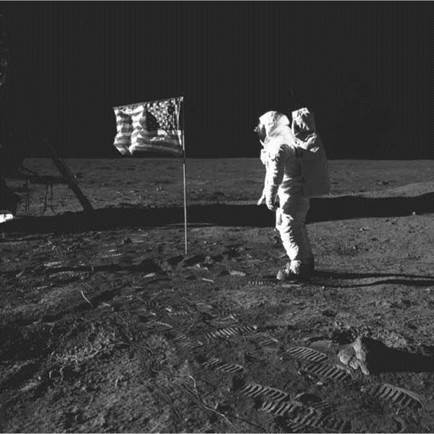John F. Kennedy and the Race. to the Moon
The assassination of President John F. Kennedy on November 22, 1963, had, of course, many consequences. One of them was turning the U. S. space program, and particularly the lunar landing effort, into a memorial to the fallen president. There was essentially no chance that the new president, Lyndon B. Johnson, would modify the goal set by President Kennedy in 1961, a goal that Johnson had himself so strongly recommended. To reinforce his commitment to President Kennedy’s space legacy, less than a week after the assassination Johnson announced that Cape Canaveral would be renamed Cape Kennedy and that the space launch facilities located there would be called the John F. Kennedy Space Center.1
In the more than five-and-a-half years between Kennedy’s death and the July 20, 1969 landing of Apollo 11 astronauts Neil Armstrong and Buzz Aldrin on the Moon, dedication to Kennedy’s commitment to achieving that feat “before this decade is out” sustained the program through delays and difficult times, including the death of three Apollo 1 astronauts in a launch pad accident on January 27, 1967. When the Apollo 11 command module Columbia returned to Earth, landing in the Pacific Ocean at dawn on July 24, 1969, a large video screen in Apollo Mission Control in Houston displayed these words:
I believe that this nation should commit itself to achieving the goal, before this decade is out, of landing a man on the moon and returning him safely to earth.
John F. Kennedy to Congress, May 25, 1961
Above the image of the Apollo 11 mission patch on another screen appeared: Task accomplished July 1969
A half century has passed since President Kennedy decided to send Americans to the Moon, and almost forty years since the last two Apollo astronauts walked on the lunar surface. As noted in the prologue, historian Arthur Schlesinger, Jr. some years ago suggested that “the 20th Century will be remembered, when all else is forgotten, as the century when man burst his terrestrial bounds.”2 While the broadest historical significance of the initial journeys to Moon may indeed take centuries to fully appreciate, it is certainly possible to evaluate the impacts of the lunar landing program to date and of John F. Kennedy’s role in initiating the effort and continuing to support it until the day of his death.3 This chapter contains my assessment of what Kennedy’s commitment to the race to the Moon tells us about how John F. Kennedy carried out his duties as President of the United States; asks whether such a presidentially directed large-scale undertaking can serve as a model for other such efforts; and evaluates the several impacts of Project Apollo. I carry out this last evaluation in terms of how well Apollo served the objectives sought by President Kennedy in sending Americans to the lunar
|
Apollo 11 astronaut Buzz Aldrin and the U. S. flag on the lunar surface, July 20, 1969 (NASA photograph). |
surface, in terms of its impact on the evolution of the U. S. space program since the end of Project Apollo, and in terms of how humanity’s first journeys beyond the immediate vicinity of their home planet will be viewed in the long sweep of history.











